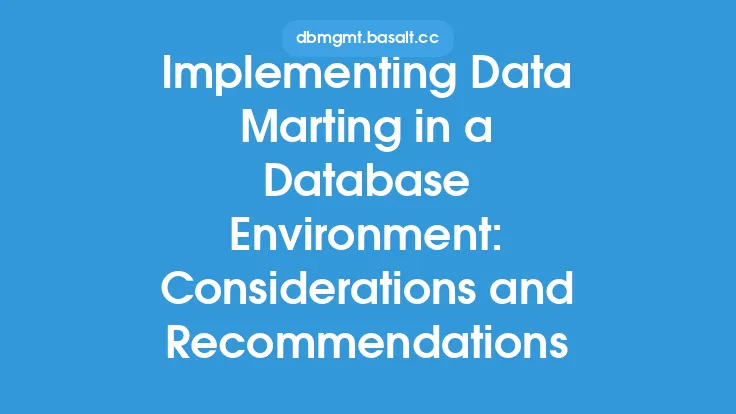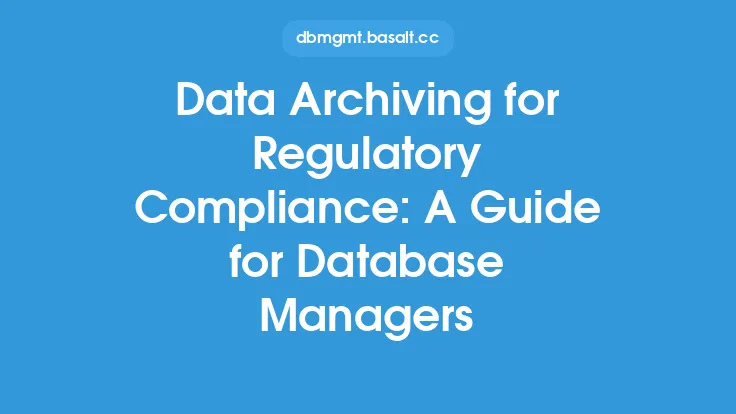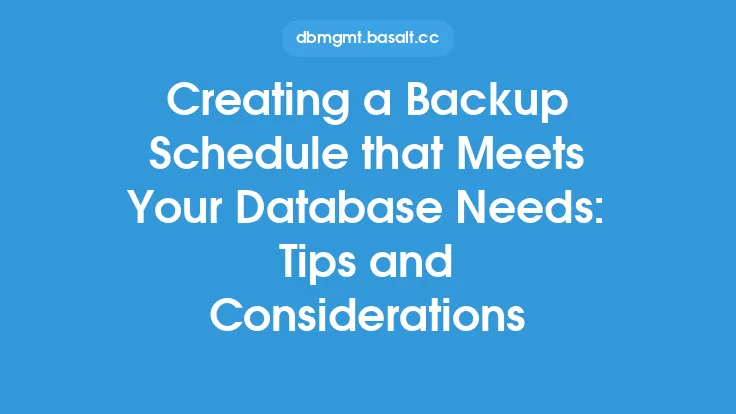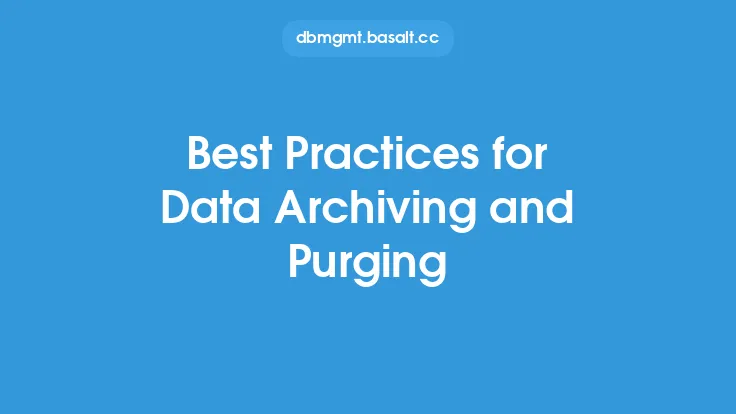When it comes to managing large amounts of data, creating a data archiving plan is a crucial step in ensuring the long-term preservation and accessibility of important information. Data archiving involves the process of moving inactive or less frequently used data to a separate storage system, where it can be retained for future reference or compliance purposes. A well-planned data archiving strategy can help organizations reduce storage costs, improve data management, and ensure regulatory compliance.
Key Considerations for Data Archiving
There are several key considerations that organizations should take into account when creating a data archiving plan. First and foremost, it's essential to define the scope and purpose of the archiving project. This includes identifying the types of data to be archived, the retention period, and the storage requirements. Organizations should also consider the data format and structure, as well as any specific regulatory or compliance requirements that may apply.
Another critical consideration is the selection of a suitable archiving solution. This may involve choosing between on-premise and cloud-based storage options, as well as evaluating the features and functionality of different archiving tools. Organizations should also consider the scalability and flexibility of the archiving solution, as well as its ability to integrate with existing data management systems.
Data Classification and Retention
Data classification and retention are critical components of a data archiving plan. Organizations should establish clear policies and procedures for classifying and categorizing data, based on factors such as sensitivity, importance, and retention requirements. This may involve assigning metadata tags or labels to data, as well as establishing clear guidelines for data handling and storage.
Retention policies should also be established, outlining the length of time that data should be retained, as well as any specific requirements for data destruction or disposal. Organizations should consider factors such as regulatory compliance, business requirements, and data value when determining retention periods.
Storage and Retrieval Considerations
When it comes to storing archived data, organizations should consider a range of factors, including storage capacity, data format, and retrieval requirements. Archived data should be stored in a secure and accessible location, with adequate controls in place to prevent unauthorized access or data loss.
Organizations should also consider the retrieval requirements for archived data, including the speed and frequency of data retrieval. This may involve establishing clear procedures for requesting and retrieving archived data, as well as ensuring that data is stored in a format that can be easily accessed and read.
Security and Compliance Considerations
Security and compliance are critical considerations for data archiving, particularly in industries that are subject to strict regulatory requirements. Organizations should ensure that archived data is stored in a secure and tamper-proof environment, with adequate controls in place to prevent unauthorized access or data breaches.
Compliance requirements should also be carefully considered, including any specific regulations or standards that apply to data archiving. Organizations should ensure that their archiving solution meets all relevant compliance requirements, including those related to data retention, access, and disposal.
Best Practices for Data Archiving
There are several best practices that organizations can follow to ensure effective data archiving. First and foremost, it's essential to establish clear policies and procedures for data archiving, including guidelines for data classification, retention, and storage.
Organizations should also consider implementing automated archiving processes, using tools and software to streamline data archiving and reduce the risk of human error. Regular audits and monitoring should also be performed, to ensure that archived data is accurate, complete, and compliant with regulatory requirements.
Conclusion
Creating a data archiving plan is a critical step in ensuring the long-term preservation and accessibility of important data. By considering key factors such as data classification, retention, storage, and security, organizations can establish an effective data archiving strategy that meets their business and regulatory requirements. By following best practices and staying up-to-date with the latest technologies and trends, organizations can ensure that their data archiving plan is effective, efficient, and compliant with all relevant regulations and standards.





